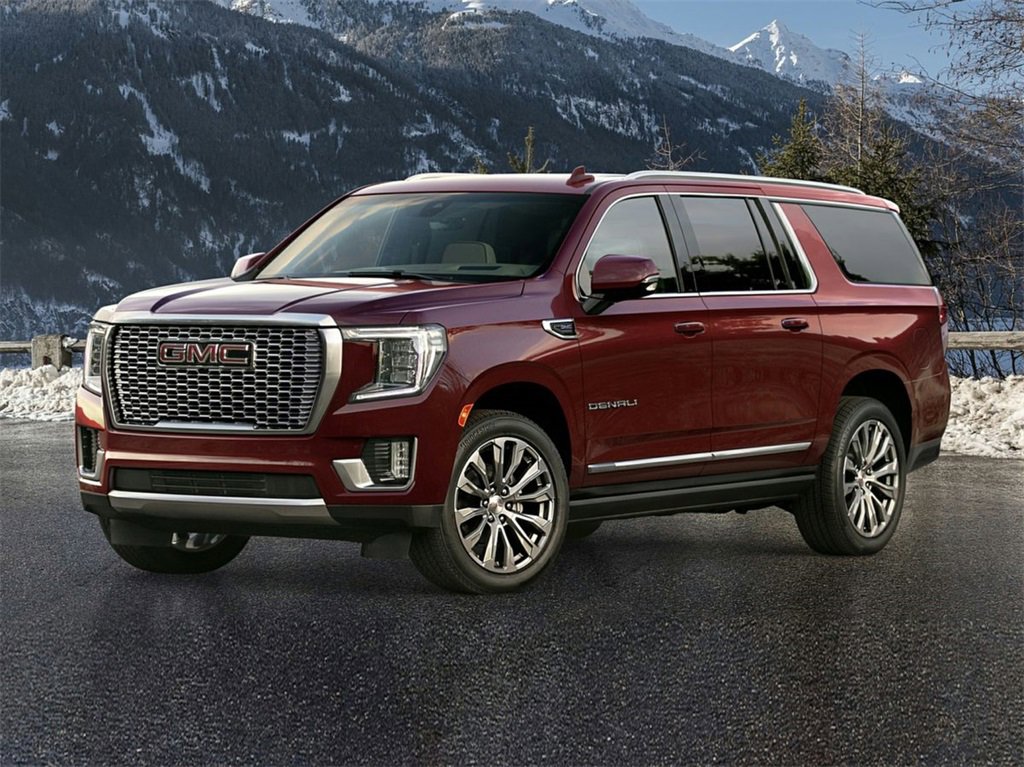In the ever-evolving world of automotive preferences, sport utility vehicles—commonly known as SUVs—have firmly taken the lead in global car sales.
Families, young professionals, retirees, and adventurers alike are all drawn to the promise of spacious interiors, elevated driving positions, versatile cargo capacity, and go-anywhere capability.
Whether it’s for school drop-offs, weekend road trips, or urban commuting, the SUV has become the go-to vehicle type across demographics and lifestyles. However, as appealing as the SUV form factor is, there’s a wide disparity in how different models behave on the road.
Some are surprisingly nimble and responsive, feeling more like hatchbacks in disguise, while others are lumbering giants, better suited to open highways than city streets.
One of the most noticeable dividing lines in the SUV landscape is how the vehicle handles itself in tight spaces, particularly when maneuvering or parking. For urban dwellers or those who frequently drive through congested city centers, ease of parking can make or break the ownership experience.
Squeezing into narrow parking spots, making tight U-turns, or navigating crowded garages becomes an everyday obstacle when you’re behind the wheel of a bulky, slow-to-react SUV.
On the other hand, there are those special models that buck the stereotype. These are the SUVs that, despite their size or segment, feel agile, intuitive, and even fun to drive. They are easy to control, effortless to maneuver, and surprisingly light on their feet, offering a stress-free and pleasant driving experience in all environments.
Today’s article explores both ends of that spectrum. First, we’ll highlight five SUVs that feel light on their feet—vehicles that are tuned with responsive steering, balanced suspensions, and thoughtfully engineered chassis that help them feel more nimble than their body style might suggest.
These vehicles are a joy to drive, whether you’re weaving through city traffic or cruising down a winding back road. They’re the kind of cars that make you forget you’re driving an SUV.
Next, we’ll turn our attention to the five SUVs that are notoriously hard to park. These are the giants of the road: large, heavy, and unwieldy, especially in tight or urban spaces.
While they offer advantages in terms of space, power, and utility, they come with significant trade-offs in terms of visibility, handling, and parking ease. Their sheer size makes them awkward in typical everyday driving conditions, and for many people, that can quickly turn into a major frustration.
Whether you’re in the market for a new SUV, looking to compare your current vehicle with others, or just curious about how different models measure up in day-to-day usability, this guide is designed to give you a clear and honest perspective.
Handling and maneuverability might not always top the spec sheet, but in real-world driving, they can be the most important features of all. Let’s dive into the SUVs that glide gracefully through traffic—and those that might leave you sweating at every parking lot entrance.
Also Read: 5 CV Joints That Take Abuse And 5 That Split Before 75K
5 SUVs That Feel Light on Their Feet

1. Mazda CX-5
The Mazda CX-5 is one of the few SUVs in the compact crossover market that truly manages to infuse athleticism into the driving experience. Unlike many of its competitors that feel like raised sedans or slightly bulkier hatchbacks, the CX-5 genuinely offers a driver-centric experience.
From the moment you sit behind the wheel, the driving dynamics feel intentional, responsive, and tactile. Mazda’s engineers have made this vehicle feel like it was designed with motion in mind, not just practicality.
The steering is light and precise, offering a direct connection to the road that is both reassuring and enjoyable. Cornering is handled with surprising confidence, thanks to the G-Vectoring Control Plus system that subtly adjusts torque to improve grip and stability.
It’s this blend of finesse and fluidity that makes the CX-5 feel like it belongs on a winding backroad just as much as a city street. The driving position and ergonomics further contribute to the sense of control and awareness.
The driver’s seat is supportive and adjustable in ways that make it easy to find that “just right” position, while the layout of the controls—center console, infotainment knob, and dashboard—feels tailored to minimize distraction.
Visibility is another strong point. The relatively narrow A-pillars and well-placed side mirrors allow for excellent outward visibility, and the inclusion of driver-assistance technologies like blind-spot monitoring, rear cross-traffic alert, and adaptive cruise control enhances both convenience and safety.
Add in a tight turning radius and light steering at low speeds, and the CX-5 becomes a breeze to navigate in parking lots or dense traffic. Despite its sporty demeanor, the CX-5 doesn’t compromise on ride comfort.
The suspension tuning is arguably one of the most refined in the segment, absorbing bumps and road imperfections while still transmitting enough road feedback to keep the driver engaged. It feels neither floaty nor harsh, striking a delicate balance that makes long commutes or weekend getaways equally enjoyable.
And when you factor in the upscale interior, intuitive tech interface, and strong fuel economy, the CX-5 becomes a standout choice for drivers who crave both utility and an engaging, light-footed ride. It’s a vehicle that demonstrates that practicality doesn’t have to come at the expense of personality.
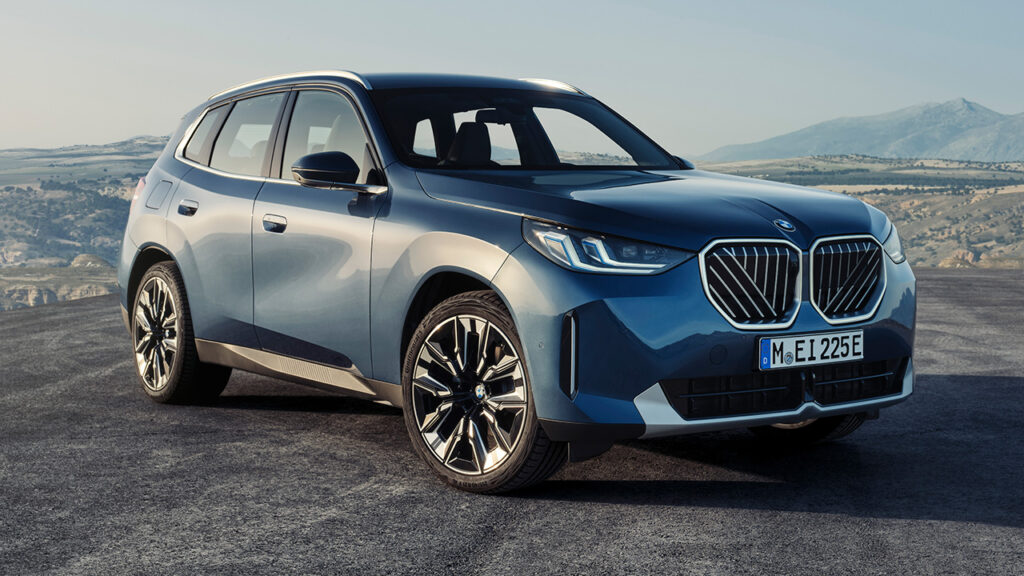
2. BMW X3
The BMW X3 perfectly encapsulates what the brand has always stood for: a precise, connected, and rewarding driving experience, even in SUV form. It carries the lineage of BMW’s sport sedans into the SUV world without sacrificing the elevated ride height and interior space that utility buyers demand.
When behind the wheel of the X3, you’ll notice right away how composed it feels through turns and how agile it is when weaving through traffic or merging on the highway.
The suspension system, especially in the M Sport variants, keeps the body flat and planted, minimizing the lean and float that many SUVs are guilty of. Combine that with BMW’s expertly tuned xDrive all-wheel-drive system and you get grip, balance, and poise in nearly every condition.
BMW has also managed to keep the X3’s weight and proportions in check, making it feel smaller than it is—no small feat considering it’s still a roomy, comfortable luxury vehicle. The steering is tight and accurate, with just enough feedback to remind you that you’re in control. This is a vehicle that encourages spirited driving, not just daily commuting.
The available engines only enhance the experience, from the efficient four-cylinder in the base model to the turbocharged inline-six found in the M40i variant, which delivers truly thrilling acceleration and midrange power.
Even with the added horsepower, the X3 never feels like it’s being overwhelmed by its own engine. It’s always composed, with a level of refinement that’s hard to match in its class.
Parking and city maneuverability are often overlooked with sportier SUVs, but not here. BMW’s available Parking Assistant Plus and 360-degree camera systems make parking stress-free, and the elevated seating position offers excellent visibility from all angles. The X3 doesn’t feel bulky or oversized when navigating narrow streets or squeezing into urban parking garages.
That’s a huge win for drivers who want performance and prestige without the usual bulk associated with luxury SUVs.
Overall, the BMW X3 feels light on its feet, not just because of engineering, but because of a thoughtful blend of chassis tuning, drivetrain excellence, and technology that empowers the driver in every situation.
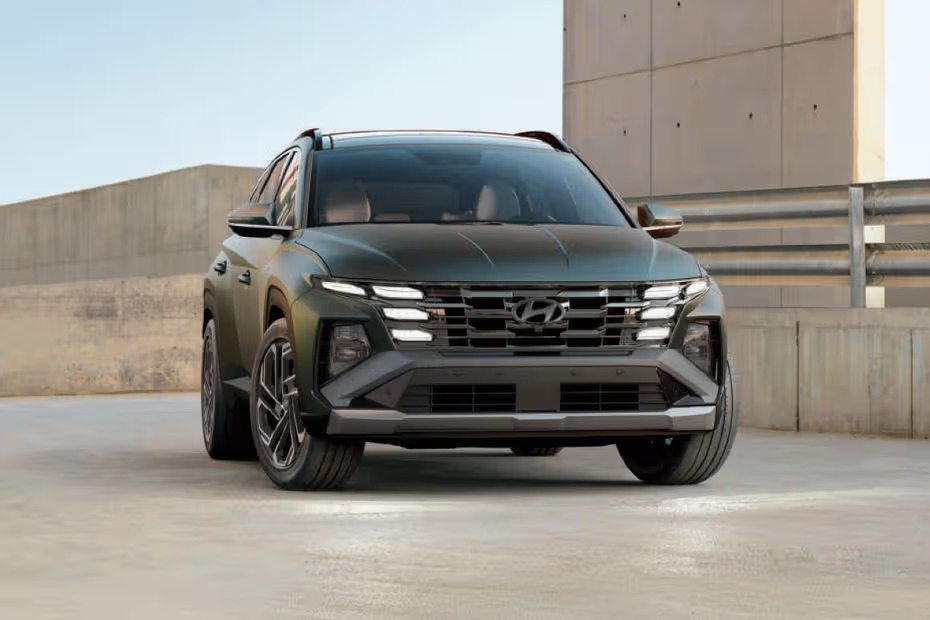
3. Hyundai Tucson
The Hyundai Tucson has made a dramatic leap in terms of design and dynamics in recent years, positioning itself as not just a value leader, but a driver-friendly SUV with surprising nimbleness. It no longer lags behind the competition—instead, it stands out with its modern aesthetics, smart tech, and notably agile handling characteristics.
Hyundai has completely reimagined the Tucson’s chassis and suspension, delivering a vehicle that feels significantly more refined and engaging to drive.
The steering is light and progressive, perfect for urban maneuvering, while still giving enough feedback to keep the driver engaged on the highway. Even tight roundabouts and quick lane changes feel smooth and effortless, which is rare in a vehicle of this size and price range.
Hyundai’s focus on ergonomics and ease-of-use is also felt from the driver’s seat. The Tucson boasts a minimalist yet functional dashboard layout with intuitive infotainment controls that minimize distraction. The SUV’s proportions are just right—not too bulky, not too small—making it a pleasure to park and navigate through crowded city centers.
Available features like rear cross-traffic alerts, a high-resolution rearview camera, and blind-spot collision-avoidance assist give drivers extra peace of mind, especially in tight spots. Add in responsive throttle input and a transmission that’s smooth rather than sluggish, and you have a package that simply feels effortless to drive in any environment.
On top of its city-friendly agility, the Tucson also offers a surprisingly calm and composed ride at highway speeds.
Road and wind noise are well suppressed, and the suspension absorbs rough patches without feeling disconnected from the pavement. Hyundai has crafted a driving experience that’s light, intuitive, and confidence-inspiring.
It’s ideal for commuters and small families alike who want the benefits of a crossover without sacrificing the ease of a more compact vehicle.
In short, the Tucson feels engineered for the real world: nimble enough to dart through traffic, yet composed enough for longer journeys, all while delivering comfort and modernity without the bulk of traditional SUVs.
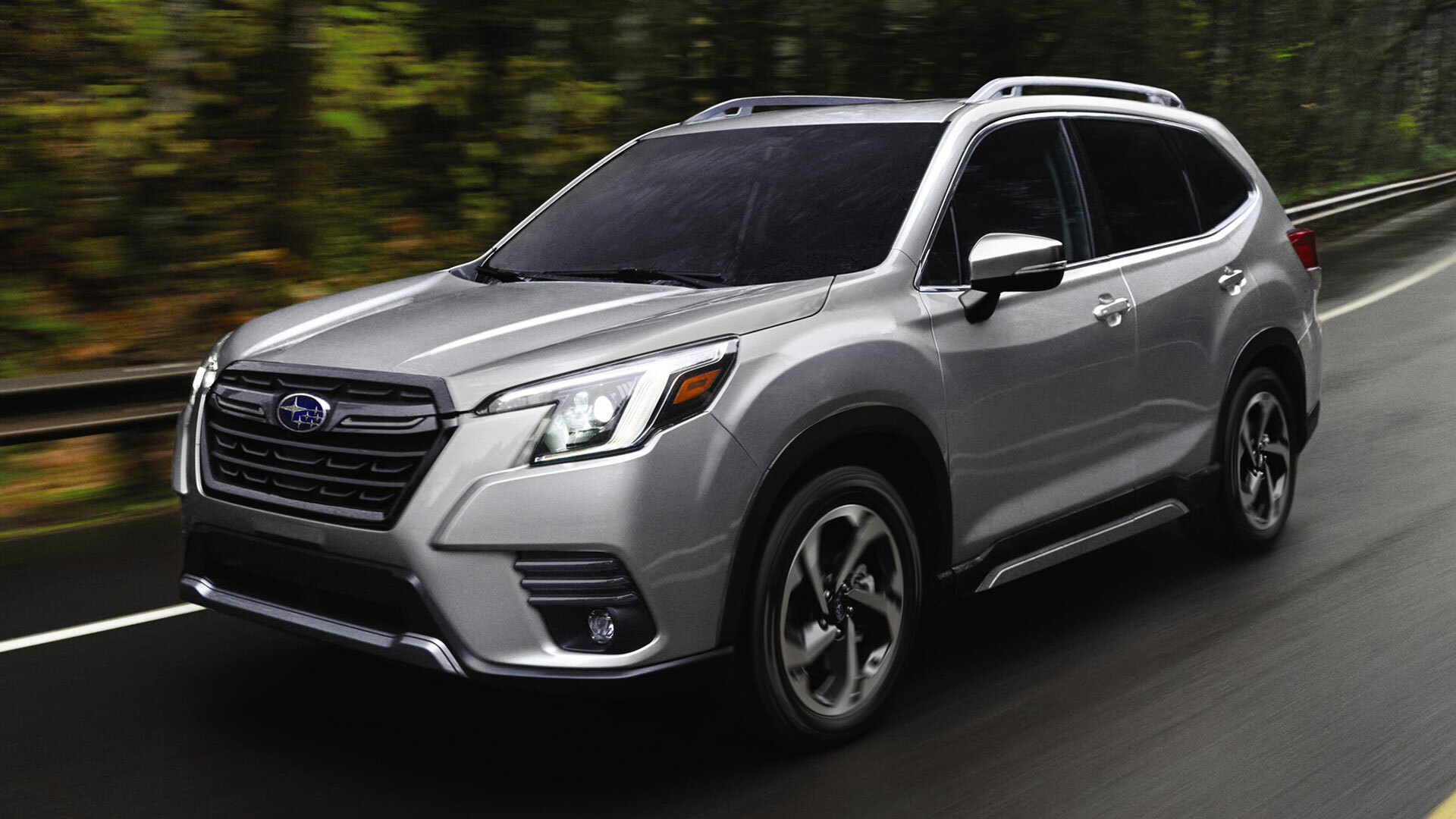
4. Subaru Forester
The Subaru Forester has carved out a loyal following by offering an intelligent balance of rugged practicality and uncommonly good maneuverability. Unlike most compact SUVs that prioritize a car-like feel or off-road aspirations, the Forester seems to live at the intersection of both.
Thanks to its standard all-wheel drive and unique boxer engine layout, it benefits from a lower center of gravity than you’d expect. That makes it feel more stable in corners and far less top-heavy when taking sharper turns or quick maneuvers. It’s not sporty, per se, but it’s surprisingly light on its feet, and it doesn’t shy away from a curvy road or a tight parking space.
One of the standout characteristics of the Forester is its outward visibility. Subaru has prioritized tall windows and minimal blind spots, which dramatically improve spatial awareness and confidence behind the wheel.
Whether you’re threading the needle through a narrow alley or backing into a tight driveway, the Forester gives you a much clearer view of your surroundings than many other crossovers in its class.
That alone makes it feel easier and more manageable to drive, especially in high-stress driving conditions like parallel parking on a busy city street.
Add to that its relatively narrow profile and smartly tuned electric power steering, and you get a vehicle that’s as comfortable navigating a supermarket lot as it is carving through a snowy mountain pass.
Furthermore, the Forester’s size is deceptively efficient. Inside, it’s one of the roomiest options in the segment, offering generous cargo capacity and rear legroom, yet it never feels oversized on the road.
Its square proportions make it easy to judge where the corners are when maneuvering in tight spaces, and its simple, utilitarian design feels intentional rather than bloated.
Subaru’s EyeSight safety suite also supports the driver with features like lane centering and pre-collision braking, reducing fatigue and enhancing confidence. In sum, the Forester strikes an elegant balance between comfort, utility, and agile drivability—qualities that combine to make it one of the most user-friendly SUVs for drivers who need capability without complication.
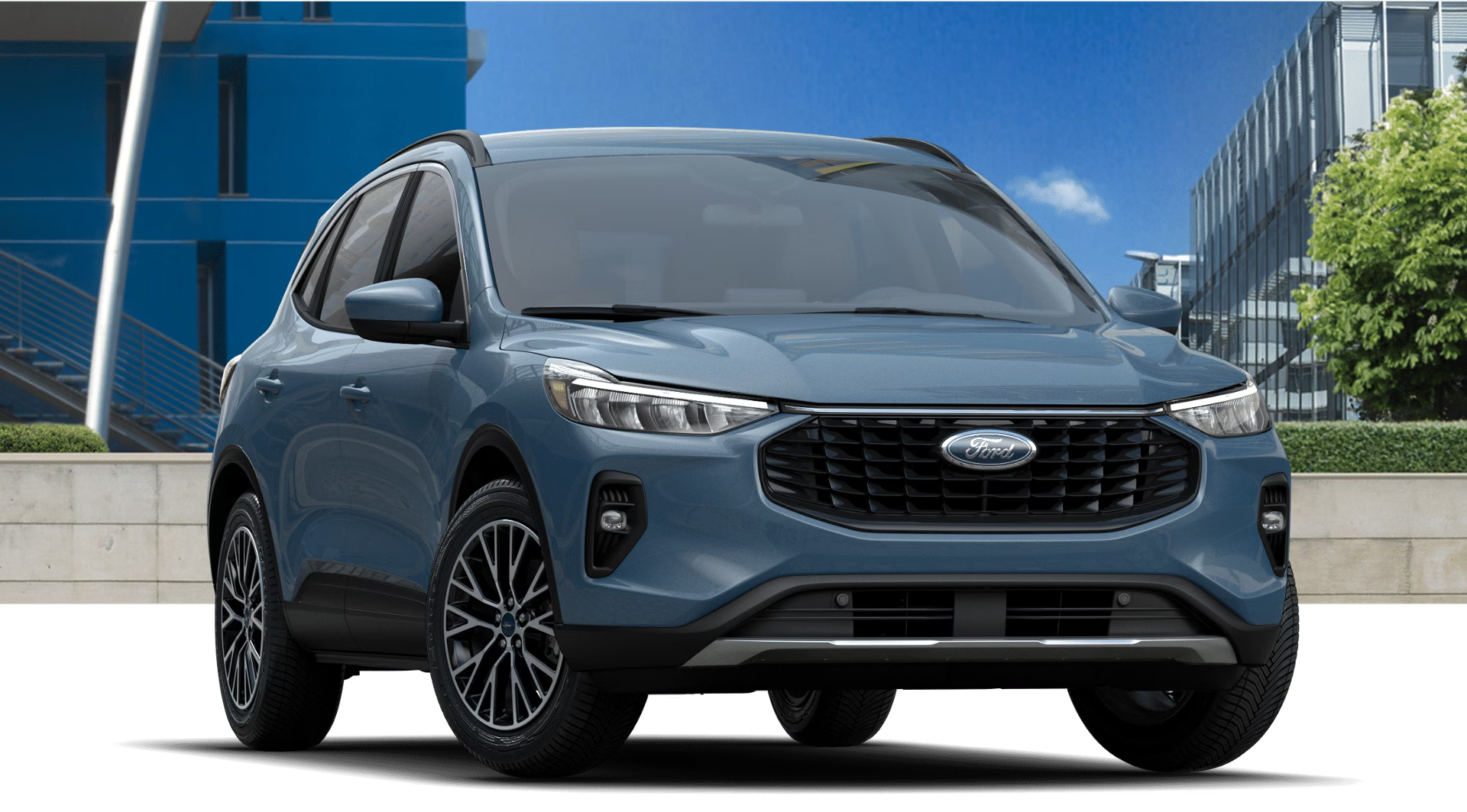
5. Ford Escape
The Ford Escape might fly under the radar in a crowded compact SUV market, but it’s quietly one of the easiest-to-drive and lightest-feeling options available.
With its recent redesign, the Escape brought sleeker looks, improved aerodynamics, and a driving experience that feels tailored for the everyday urban commuter. It responds promptly to throttle input, handles smoothly through traffic, and maintains a composed demeanor on winding roads.
The suspension is tuned to absorb city potholes and uneven surfaces without becoming floaty or vague. Combined with its relatively light curb weight and efficient packaging, it gives the impression of a nimble, manageable vehicle that doesn’t demand constant correction or muscle to operate.
One of the Escape’s strongest assets is its steering calibration. It’s light at low speeds, which makes navigating tight parking spots and complex intersections a breeze, yet it firms up nicely at higher speeds to give the driver more road feel and confidence.
The turning radius is tight enough to compete with some sedans, and it feels natural to weave through tight spots without the awkwardness that sometimes accompanies higher-riding vehicles.
Available driver aids, including Active Park Assist and adaptive cruise control, further reduce the mental load of driving in congested environments. In short, the Escape feels like a thoughtfully engineered answer to the daily challenges faced by modern drivers.
Beyond its urban friendliness, the Escape also benefits from solid highway composure and long-haul comfort. It offers multiple engine options, including a hybrid and plug-in hybrid, each of which delivers smooth and linear power delivery.
Even fully loaded, the Escape maintains its balance, and the chassis responds predictably to sudden changes in direction or road conditions.
Whether you’re merging onto a busy freeway or navigating an underground garage, the Escape is one of those rare SUVs that seems to disappear around you—it becomes an extension of the driver rather than a burden. That’s the hallmark of a vehicle that feels light on its feet: it’s not just easy to drive—it’s easy to live with.
5 SUVs That Are Hard to Park

1. Chevrolet Suburban
The Chevrolet Suburban is one of the largest passenger vehicles available to the general public, and its size is both its greatest strength and its most glaring weakness, especially when it comes to maneuverability and parking.
Designed to transport large families, tow boats, and carry serious cargo, the Suburban stretches beyond 18 feet in length and stands with a commanding presence on the road.
While this length grants it best-in-class interior space and luggage capacity, it poses a major challenge when trying to navigate tight parking lots, parallel park on city streets, or fit into standard garage spaces.
Simply put, it’s a vehicle built for expansive environments, not confined ones. Even experienced drivers will find themselves taking extra care in corners or pulling multiple-point turns to make simple maneuvers.
From the driver’s seat, the vehicle’s bulk becomes immediately apparent. Visibility, while better than some rivals due to its elevated seating position and large side mirrors, is still compromised by its sheer length and the extended rear overhang. Rearward visibility can be tricky, especially when fully loaded with passengers or cargo obstructing the view through the back window.
While Chevy does provide modern driver assistance features like rearview cameras, sensors, and even surround-view cameras on higher trims, they do little to shrink the perception—or reality—of the vehicle’s size.
The sensors are helpful, yes, but they can’t compensate for the anxiety of trying to wedge this beast into a compact parking space or fit through a narrow drive-thru.
Moreover, the Suburban’s turning radius is wide—wider than some commercial vans—and that means drivers have to plan well ahead for turns in residential neighborhoods, parking decks, and shopping centers. For families who live in suburban or rural areas with ample space and large driveways, the Suburban is a dream.
But for urban dwellers or those frequently navigating crowded environments, the Suburban becomes more of a burden than a benefit.
Even with all its tech and luxury, this SUV requires a level of spatial awareness, patience, and planning that not every driver has—or wants to develop—on a daily basis. It’s the automotive equivalent of a semi-truck in a compact world.
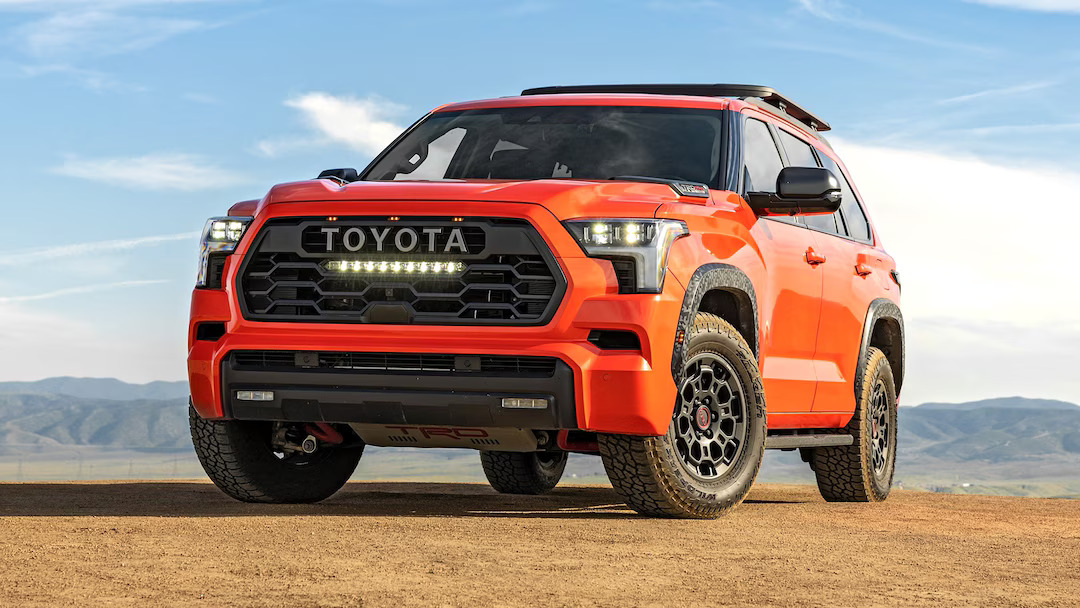
2. Toyota Sequoia
The Toyota Sequoia is a full-size, body-on-frame SUV designed with a priority on toughness, reliability, and space. While it delivers on all of those fronts, particularly with its powerful engine and truck-like durability, it also brings with it a size and stature that can be extremely unwieldy in daily life.
The Sequoia is broad, long, and tall, making it feel every bit like the large utility vehicle it is. That might be great for weekend adventures or towing a trailer, but it’s far less helpful when you’re trying to squeeze into a narrow parking garage downtown or maneuver into a tight parallel spot with traffic bearing down on you.
What complicates matters further is the Sequoia’s relatively outdated design in comparison to more modern SUVs. While newer iterations have added more safety tech and camera systems, its proportions and bulky body still make it harder to see out of than many of its competitors.
The beltline is high, the rear glass isn’t particularly generous, and the sheer mass of the vehicle makes quick corrections feel delayed or exaggerated.
Even seemingly minor tasks like backing into a driveway or turning around in a cul-de-sac can become multi-step efforts requiring full use of cameras and mirrors. And despite its off-road capability and powerful V8 engine, that extra size does nothing to help you in environments with tight spatial constraints.
Then there’s the issue of parking infrastructure itself. The average U.S. parking space is around 8 to 9 feet wide and 16 feet deep—dimensions that make the Sequoia an awkward fit in many cases. Drivers often find themselves parking diagonally, sticking out into traffic lanes, or simply circling the lot in search of a more accommodating space.
While Toyota’s reliability and reputation for ruggedness make the Sequoia appealing for long trips and hauling, its urban usability is very limited. Unless you live in a part of the country where wide-open roads and extra-large parking spaces are common, this SUV might feel more like a rolling obstacle than a daily driver.
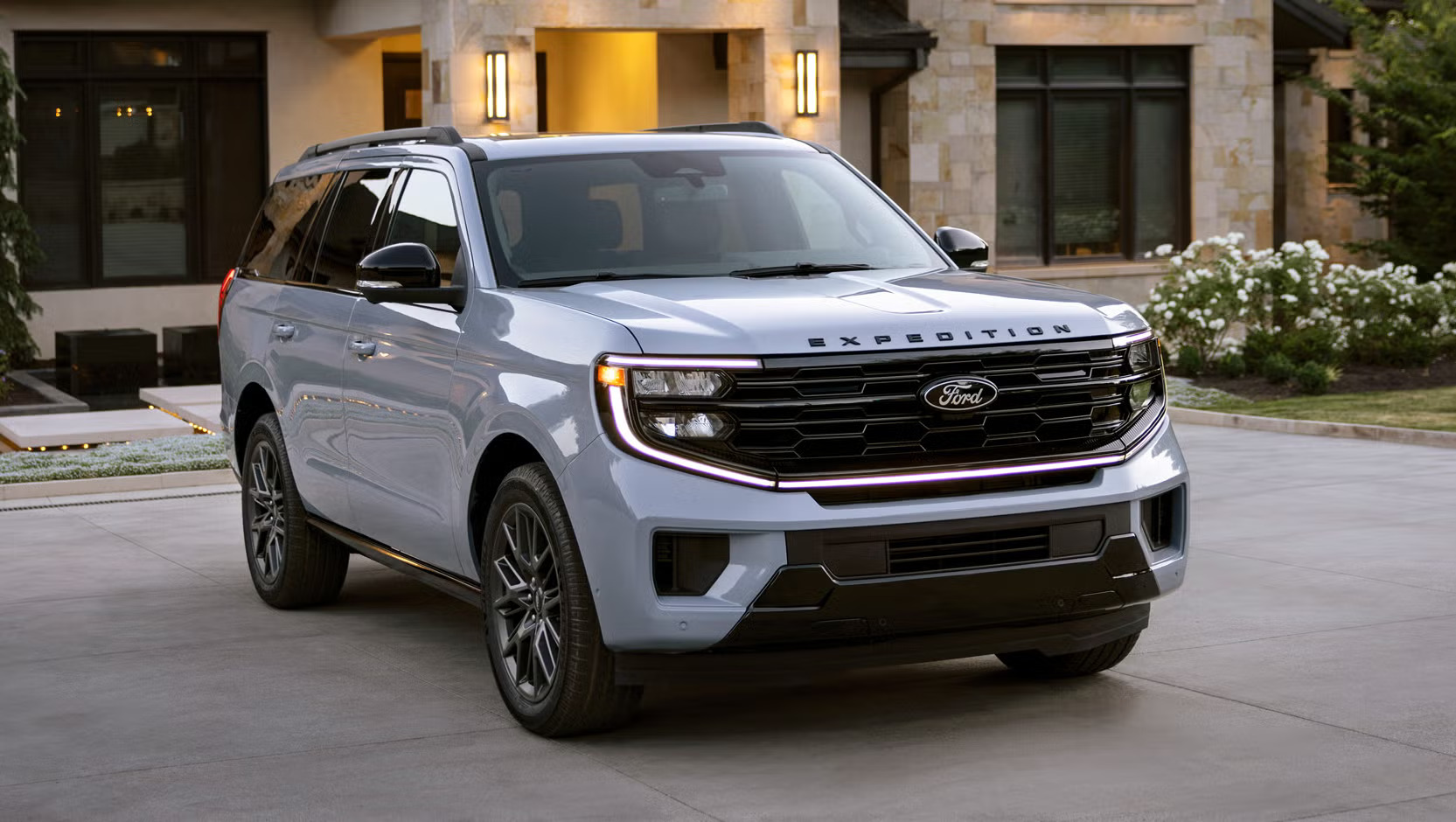
3. Ford Expedition MAX
The Ford Expedition MAX is the extended-length version of the already sizable Expedition, and it stretches practicality to the limit—sometimes literally.
At over 18 feet long and nearly 7 feet wide, the MAX version is built with large families, big hauls, and long road trips in mind. But for all that added length and cargo space, the Expedition MAX comes with the serious drawback of being one of the hardest mainstream SUVs to park and maneuver.
It’s essentially a rolling mansion, and while that’s great for legroom and third-row comfort, it becomes a major liability in crowded environments where inches matter.
One of the key challenges in managing this SUV is the combination of its length and poor turning radius. Despite having adaptive steering and parking sensors, the sheer footprint of the vehicle requires constant calculation.
U-turns often need to be abandoned in favor of 3-point (or 5-point) turns, and navigating through parking structures can feel like threading a needle.
The rear overhang is substantial, meaning you’re likely to stick out beyond the boundaries of a standard parking space, even when you’ve parked perfectly within the lines. Rear visibility is compromised unless the area is clear and unobstructed, and even then, it takes a calm and calculated approach to line it up correctly.
Ford has done its best to offset these disadvantages with technology—available features include a full suite of cameras, automatic parking assistance, and even trailer backup guidance—but these don’t always relieve the tension. You’re still driving a very large and very heavy SUV, and there’s no real shortcut around that.
Suppose you frequently find yourself driving in congested areas, sharing space in tight parking decks, or parallel parking on busy streets. In that case, the Expedition MAX is one of the least cooperative vehicles you can choose.
It excels in wide-open suburban and rural settings but becomes a source of stress and frustration in any space-constrained urban scenario.
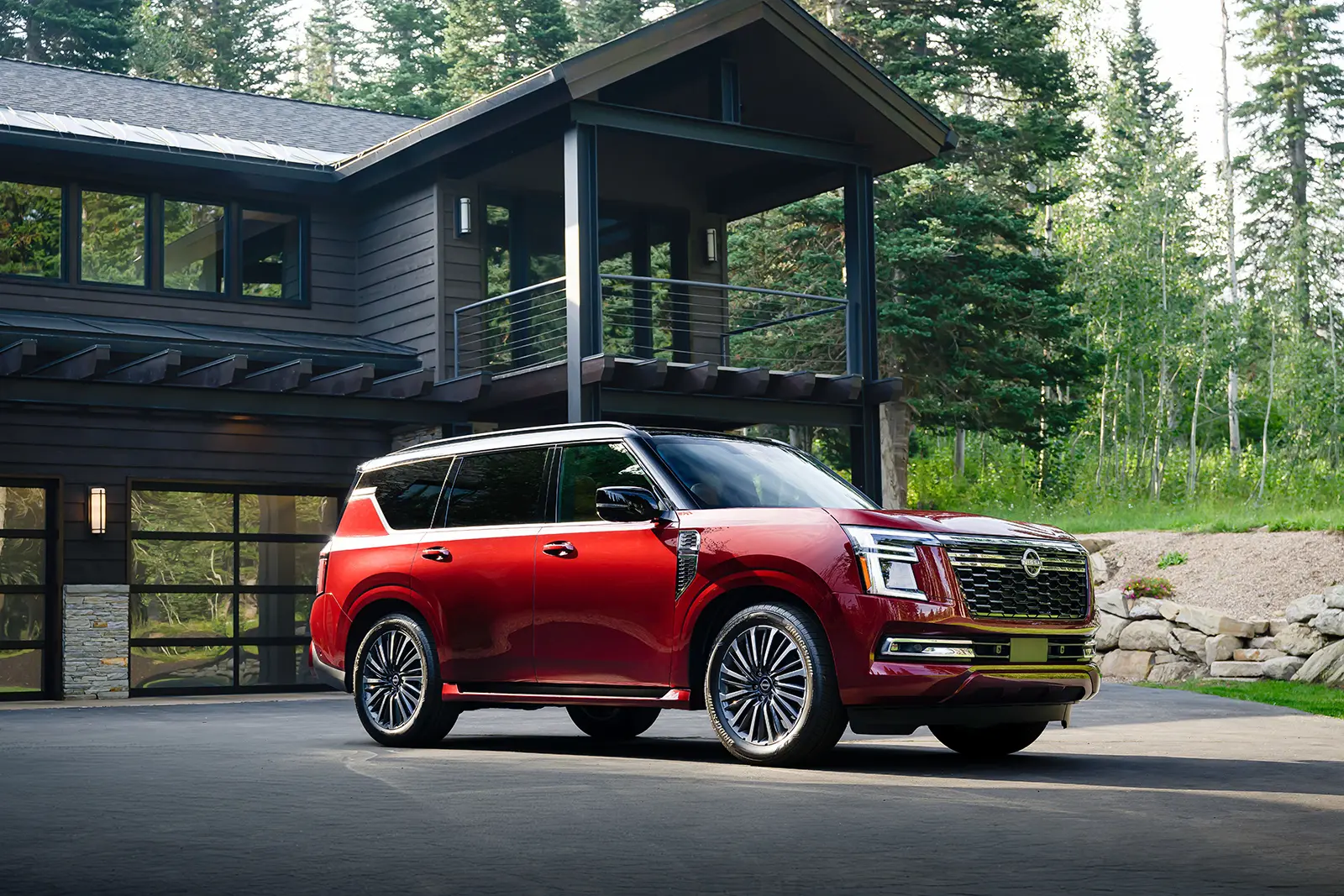
4. Nissan Armada
The Nissan Armada is another full-size SUV that delivers impressive towing capability, a powerful V8 engine, and a plush, comfortable interior—but it does so in a package that feels like it was designed before tight city driving and compact parking became everyday realities.
The Armada is tall, wide, and heavy, and the first thing you’ll notice when driving it is how much road it takes up.
It’s not just a visual impression; the driving dynamics reinforce the sensation of bulk, especially when navigating narrow lanes, congested intersections, or tight driveways. Even something as simple as a Starbucks drive-thru can become a spatial challenge in the Armada.
What makes parking particularly difficult is the Armada’s awkward rear visibility and limited camera technology, especially on lower trims. The thick rear pillars and small rear windshield can leave significant blind spots that become especially problematic when reversing or parallel parking.
While upper trims offer 360-degree cameras and backup sensors, there’s still a noticeable delay in steering response, making quick adjustments difficult during precision maneuvers.
Unlike some of its competitors that disguise their size with smart engineering or advanced steering systems, the Armada seems content to embrace its brawn—and that’s not always a good thing in tight quarters.
Furthermore, the Armada’s high center of gravity and large turning circle mean it doesn’t pivot easily in constrained areas. You may find yourself pulling forward and reversing multiple times just to get into or out of standard parking spaces.
The vehicle’s proportions, which help it shine in highway comfort and off-road power, work against it in everyday suburban and urban driving.
If you frequently encounter parking garages, tight street-side spots, or even crowded school pick-up zones, the Armada’s bulk will quickly become a source of daily inconvenience.
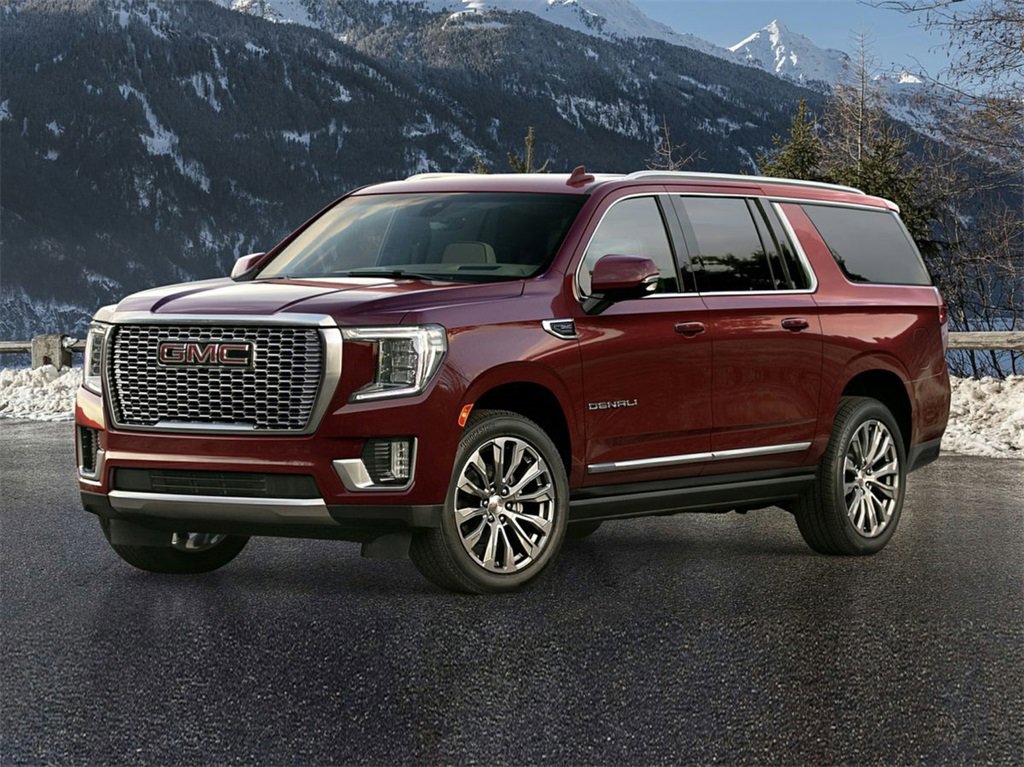
5. GMC Yukon XL
The GMC Yukon XL is essentially the upscale twin of the Chevrolet Suburban, and it carries the same challenges with parking and maneuverability, but with a bit more luxury sprinkled in.
With its extended length, three-row seating, and cavernous cargo space, the Yukon XL is designed to make long road trips comfortable and capable. However, with all of that size comes an equally large list of drawbacks when navigating cities or trying to find a spot in a crowded parking lot.
It’s a vehicle that can feel more like a limousine than an SUV in tight spaces, and while that may be great for passengers, it creates daily challenges for drivers.
Behind the wheel, the Yukon XL feels like you’re commanding a ship. The hood stretches out far in front of you, and rearward visibility is limited by the sheer length and high window line. Turning this SUV in confined areas is no small feat, even with the optional rear-wheel steering system available on high-end trims.
The vehicle’s massive proportions also make it difficult to gauge exactly where it ends, especially when backing into spaces or negotiating tighter turns. Parking assist and multi-angle cameras certainly help, but they can’t eliminate the core issue: the Yukon XL simply takes up too much space to ever feel truly comfortable in confined environments.
Even seasoned drivers used to full-size trucks or large vehicles may find themselves hesitating in certain situations, especially in older cities or neighborhoods with narrower road infrastructure.
The Yukon XL demands a degree of caution and spatial awareness that can be mentally exhausting in stop-and-go traffic or during errands that involve repeated parking and pulling out.
It’s a fantastic vehicle for hauling, road trips, and prestige, but in a world where every inch counts, particularly in crowded parking areas, it’s one of the most difficult SUVs to live with daily if maneuverability is a priority.
Also Read: 5 Parking Sensors That Actually Help and 5 That Are Too Sensitive
As the SUV market continues to expand and diversify, buyers are faced with more choices than ever before.
From sleek crossovers to full-size road kings, there’s truly an SUV for every lifestyle. But with this growing variety comes the reality that not all SUVs are built equally when it comes to maneuverability, agility, and urban usability.
Some vehicles seem to disappear around the driver, making the driving experience seamless and surprisingly dynamic, while others demand more space, more patience, and more effort just to get through a day of errands.
The contrast between SUVs that feel light on their feet and those that are difficult to park couldn’t be starker—and it’s something every prospective buyer should take into account.
The five nimble SUVs we explored—Mazda CX-5, BMW X3, Hyundai Tucson, Subaru Forester, and Ford Escape—all manage to inject a sense of ease and enjoyment into the daily driving experience. These vehicles show that utility doesn’t have to mean sacrificing agility.
Whether it’s Mazda’s performance-oriented engineering or Hyundai’s intelligent tech-assisted driving, each of these models brings a sense of confidence to the road. They’re particularly well-suited for urban dwellers, daily commuters, and drivers who value a sense of control and responsiveness in their vehicle.
More importantly, they demonstrate that smart design, well-tuned steering, and thoughtful proportions can transform how an SUV feels behind the wheel.
On the other end of the spectrum, vehicles like the Chevrolet Suburban, Toyota Sequoia, Ford Expedition MAX, Nissan Armada, and GMC Yukon XL remind us of the practical trade-offs that come with size and capability.
These SUVs are built to do big jobs—tow trailers, haul gear, carry eight passengers in comfort—but those benefits come at a cost in the form of limited maneuverability, awkward proportions, and poor visibility in tight situations.
They excel on highways and open spaces but quickly become burdensome in narrow streets, tight parking lots, or dense city traffic.
For drivers who live in spacious suburbs or rural areas, they might be perfect. But for anyone who regularly encounters compact garages or parallel parking situations, these vehicles can feel like a daily struggle.
Ultimately, there’s no one-size-fits-all answer when choosing an SUV. It all comes down to priorities. Do you value space and strength above all else, or are you looking for something that fits your lifestyle, both figuratively and literally?
The good news is that there are excellent choices on both ends of the spectrum—and everywhere in between.
What matters most is knowing what kind of driving you do, where you do it, and how your vehicle supports (or complicates) that routine.
As SUV design continues to evolve, we may eventually see large vehicles become more maneuverable and small ones even more dynamic.
Until then, being informed is your best tool. Knowing which SUVs are agile and which ones feel like giants can make all the difference in how much you enjoy—or dread—your time behind the wheel.

